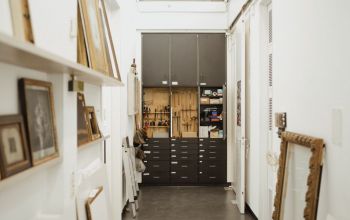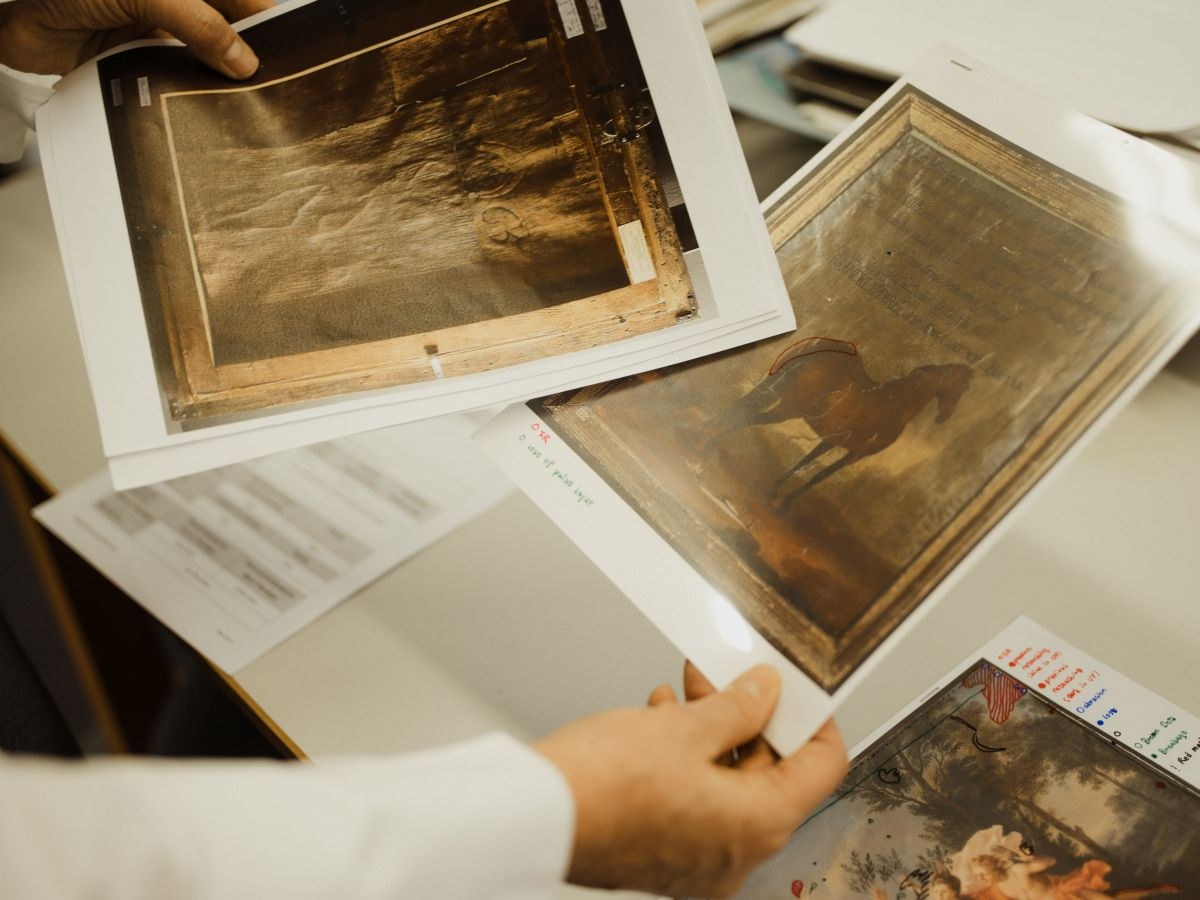The acceptance of imperfections - interview with Anne Harmssen (Part 2)
**Can you give us an example?** We have a very large, almost 400-year-old painting by Jacob Jordaens here, which we are currently examining to see if it can be restored. The painting is almost 4 metres wide and as well as a complex painting technique, has a really fascinating history of development. Over a period of around 25 years, the artist reworked the painting at least four times, i.e. he repeatedly sewed on canvas and carried on painting. So, in addition to the artist's continued subject matter, it’s also possible to see his development as a painter. The picture has suffered a great deal of damage over the centuries and was frequently restored, and this was unfortunately not always beneficial to the work. We now have to look for the original [painting] under the many layers of in some cases large-scale overpaintings and determine how much of the original painting is still there and in what condition, in order to then be able to decide how great the risk of restoring this large piece is. **How does one approach such a work?** Before we start work on such a painting, it is examined with different light sources at close range and microscale, X-rayed and also examined by means of infrared reflectography in order to find out which changes were made by the artist himself during painting and which were added later by someone else. In the case of this painting in particular, the genesis of the work reads like a thrilling detective novel. If Jacob Jordaens knew what we’d found out about his painting... **Isn’t it about time, and wouldn’t it be interesting, to present exactly these sorts of findings in an exhibition?** Oh, I've been dreaming of doing that for a long time. At present, however, we have our hands full with other things. The Löwenburg is to be cleared this year for structural maintenance, exhibitions are planned, and documenta 14 is looming. For that, for example, we’ll be clearing out the artworks from the entire Neue Galerie to create exhibition space for documenta 14. But at the same time, it is exactly this variety that makes the job so interesting. **You just said that with this painting by Jacob Jordaens, there were restorations that weren’t beneficial for the picture. Do you often find that?** The restorations of the last centuries often reflect the zeitgeist and the aesthetics of the restorer, which today would be a real no-go. However, you also have to consider that it was only in the first half of the 20th century that the profession of the so-called painter-restorer slowly developed into an academically-qualified conservator. The study of restoration then became established in the sphere of paintings at the beginning of the 1960s, and in other specialist areas in the 1980s. Prior to that, it was often painters or craftsmen who looked after the works of art, but the concept of what restoration means steadily changed and in 1989, finally culminated in a Code of Ethics in which the fundamental approach to restoration work is recorded. Restoration is a measure that should retain a painting’s exceptional character. Today, conservators act more according to the adage, “less is more”! Lessons have been learned from the mistakes of the past, and new methods and materials are applied with more restrained restoration measures. One must always understand the artist's work, and this goes much further than examining his painting technique. Today, no one would ever contemplate altering a painting in terms of aesthetics or the zeitgeist. In the past, many paintings were misinterpreted by restorers, because they did not understand the content of the painting correctly and carried out interpretative retouchings that in turn led to misinterpretations on the part of art historians. **Oh.** This is why we work very closely with art historians. As conservators, we have the opportunity to look into the genesis of a work of art and discover things that are of great importance to art historians. In turn, an art historian has their eye on the historical context and can support our work with their knowledge. An appreciation for such collaboration has only developed in the last 15 years, however, and I’m very happy that there’s such fantastic teamwork in this area here in Kassel. **Considering all of this, it’s hard to believe that the profession of restorer is still not protected.** Yes, that's right. For several decades, the German Restorers' Association has been trying to get professional protection going. Only two federal states have implemented protection of the professional title so far; here in Hessen, they’ve unfortunately not yet managed to do so. At the moment, anyone can call themselves a conservator if they feel so inclined. Studying restoration is the best path for approaching this profession professionally. There are very good study programmes with comprehensive teaching content for almost all disciplines, but practical application is often lacking. Here we offer traineeships that allow students to gain practical experience during or after their studies, because to become a good conservator, it’s not enough to just do a six-month internship. Previous article in the series:The acceptance of imperfections - interview with Anne Harmssen (Part 1)
Next article in the series:
The acceptance of imperfections - interview with Anne Harmssen (Part 3)
Gallery
Published on 19.07.2018
Share on Twitter?
By clicking on this link you leave the Kultur in Hessen website and will be redirected to the website of Twitter. Please note that personal data will be transmitted in the process.
Further information can be found in our privacy policy.
Share on Facebook?
By clicking on this link you leave the Kultur in Hessen website and will be redirected to the website of Facebook. Please note that personal data will be transmitted in the process.
Further information can be found in our privacy policy.











